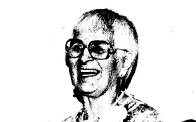Agnes
Semmler

Through
a search of
public
newspaper and
magazine
records, we
were able to
compile this
historical
overview of
Agnes
Semmler’s
life.Cited
below are
those sections
from the
newspapers and
magazines
which quote
Agnes speaking
in her own
words as well
as any
information
about Agnes
and Slim’s fur
trade history
in the
Mackenzie
Delta/
Beaufort Sea
and Coronation
Gulf areas of
northern
Canada.
News
headlines
about Agnes
Semmler
1958
– Agnes
Semmler
“accompanied
Liberal
candidates on
their
campaigns
[around the
NWT] and acted
as an
interpreter.
Her second
language is
Eskimo”
(Edmonton
Journal,
Monday, June
5, 1967)
1965
– Agnes
Semmler “ran
for one of the
four positions
on the [NWT]
territorial
council. She
lost by 150
votes.”
(Edmonton
Journal,
Monday, June
5, 1967)
1967-
Honour for
North’s Woman
of Century.
(Edmonton
Journal,
Monday, June
5, 1967)
“Do you
realize who
you are
talking to?
The Woman of
the Century
for the
Canadian
north!” Mrs.
L.F. (Agnes
Semmler) made
this statement
in a telephone
call to Sid
Hancock,
Mackenzie
District
administrator,
when she
received the
news that the
National
Council of
Jewish Women
had chosen her
as of one of
the 11 women
of the century
in Canada.
Born in Old
Crow, Yukon in
1913, Mrs.
Semmler
describes
herself as “a
product of the
gold rush”.
Her mother was
Indian and her
father was
white.
When she was
19, in
Coppermine
River NWT,
“Mr. Semmler
came along
looking for a
wife, and he
thought I’d
make a good
fox skinner,”
she laughed.
At Bernard
Harbour, the
couple started
a fur trading
and general
store.
North
Natives ‘Lack
Housing’
(Canadian
Press release,
1967, n.d.)
Ottawa (CP).
The Canadian
North has lots
of space but
nowhere for
its native
people to
live, says
Agnes Semmler
of Inuvik,
NWT.
Mrs. Semmler
recently
honoured as
Woman of the
Century in the
North, was
here Friday to
ask for
government
support for
housing and
education in
Inuvik.
The
grey-haired
grandmother of
12 says Eskimo
girls and boys
can’t find
proper living
facilities if
they take a
job in her
town of 2500.
Workers from
the south are
guaranteed
government
housing in
Inuvik, but
locally hired
help have to
find their
own. This
means living
with their
family in a
20x25 foot
house, where
the whole
family cooks,
eats sleeps
and lives.
“Most of them
are just
dumps. A
working girl
can’t live
like that.
We’re
educating them
for something
better.”
The outspoken
former town
councillor is
the daughter
of a Swedish
trader and an
Indian woman.
She considers
herself an
Eskimo,
because they
raised her
until she
turned five,
after her
mother died.
After nine
years at a
mission
school, she
joined her
father, a
Hudson Bay
Company scout
in the western
Arctic…Besides
better
housing, she
wants
government
help for the
Inuvik
kindergarten…Kindergarten
teachers now
volunteer
[their
services].
“The Indian
and Eskimo
children don’t
learn anything
at home and
besides they
have a
language
problem when
they come to
school. It’s
proved they do
better in
grade one if
they have
kindergarten.”
Mrs. Semmler,
54, is not an
admirer of the
free and easy
way native
children are
brought up.
Mischief. “The
parents just
let them go.
They just
spoil them.
They don’t
learn anything
constructive;
they just get
into a lot of
mischief.”
A strong
believer in
discipline,
Mrs. Semmler
is proud of
her own
children. Two
girls, one a
nurse and one
a hairdresser
are married in
Tacoma,
Washington and
Kenora, Ont.
One boy is at
home and the
other,
adopted, is a
student in
Edmonton.
|